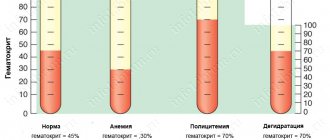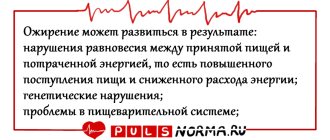Bronchial asthma is an insidious pathology of the respiratory system that requires regular monitoring. Peak flowmetry for bronchial asthma allows you to monitor dynamics, prevent complications and receive timely help.
Many people experience bronchial asthma. This disease has a chronic form. These points determine the relevance of this diagnostic method. Every asthmatic can resort to it. Current health and age do not matter.
What is peak flowmetry?
Peak flowmetry is performed to adjust treatment and prevent exacerbation of bronchial asthma. This standardized peak flow chart helps the physician and asthma sufferer recognize the pattern of the disease and detect outbreaks at an early stage.
Peak flowmetry (the research algorithm must be studied before starting the procedure) is a diagnostic method that measures the maximum speed of exhaled air.
Peak flow monitoring helps determine the degree of airway obstruction (narrowing).
Because of the wide range of “normal” values and the high degree of variability, peak flow is not always a recommended test for identifying asthma. However, people with asthma may benefit from regular peak flow monitoring and a doctor can evaluate the effectiveness of the therapy.
When peak flow is monitored regularly, the results are recorded on a peak flow chart. For daily monitoring of the condition, a portable peak flow meter, peak flow meter, is used. It is important to use the same device every time.
Carrying out spirometry
The maximum air flow velocity (MAF) is determined by a peak flow meter in the first milliseconds of the test. The procedure takes place in an outpatient clinic. The patient is in a standing (sitting) position. He inhales deeply until the end, and then briefly, but exhales as completely as possible.
If PEF changes, then it does not always correlate with other changed indicators of respiratory function. The degree of obstruction may be underestimated if PEF is normal in children with bronchial asthma. Therefore, for comparison of PEF, earlier indicators of patients are taken.
Features of the procedure
FVD is examined in the morning on an empty stomach or 1.5 hours after a meal. It is necessary to calm down so that there is no nervous or physical overstrain. You must not smoke or undergo physical therapy before the test. After several breathing samples, computer processing is carried out and the results of the study are displayed.
With regular use of the device, the development of the disease is diagnosed and early symptoms of worsening of the disease during treatment are determined. The indicators are measured once in the morning for 1 week. Bronchodilator medications are used after the test.
The percentage of the minimum from the best indicator of the patient is determined. With a daily spread of data >20% are diagnosed with bronchial asthma. The magnitude of the deviations is correlated with the severity of the disease. Spirometry is contraindicated in the presence of diseases:
- bronchial and pulmonary systems, accompanied by cough with copious sputum production,
- exacerbations of bronchial and lung diseases, asthma attacks,
- infectious nature, for example, tuberculosis.
The test cannot be performed:
- young children,
- people with hearing and mental impairments,
- patients with epilepsy,
- people over 75 years of age.
Why is it carried out?
Peak flowmetry (the algorithm is the same for all devices) reflects the flow of air masses leaving the lungs in 1 minute. with maximum speed, which is measured in ml/min.
This is called PEF, peak expiratory flow, which is measured in two cases:
- Short-term monitoring, 2–8 weeks:
- helps in diagnosis, including cases of occupational asthma, or exclusion of asthma;
- to determine the causes of the disease;
- to monitor the effectiveness of treatment or change the drug dose.
- Long-term monitoring:
- for people with asthma who have frequent flare-ups (exacerbations);
- moderate or severe forms of asthma;
- to control bronchial hyperactivity;
- helps determine the moment to change therapeutic actions;
- to detect disease progression or addiction during long-term therapy with the same type of drugs.
To determine "personal results", the patient must measure the maximum flow rate:
- twice a day for 2–3 weeks;
- in the morning, after waking up, in the afternoon or early evening;
- The procedure should be carried out 15-20 minutes after using an inhaled fast-acting beta2-agonist.
A common beta2-agonist is albuterol. This medicine relaxes the muscles surrounding the airways, helping them to expand.
How to use a peak flow meter yourself?
This device must be used as follows:
- Remove the peak flow meter from the packaging.
- Make sure that the pointer arrow is on o.
- Take a maximum breath as deeply as possible.
- Cover the mouthpiece with your lips, while lightly holding it with your teeth. The tongue should not touch the device.
- Exhale once with maximum force.
- Remove the mouthpiece from your mouth.
- Note the PSV indicator.
This procedure should be repeated 3 times in a row. After this, the indicators should be recorded in a special diary, which is kept by patients suffering from bronchial asthma. The average peak expiratory flow rate is noted. If the PEF value is low (less than 60%), inhalation of a fast-acting drug should be done. The electronic peak flow meter differs in that the value of the peak expiratory flow rate is calculated automatically and displayed on the screen. As when using a mechanical device, the study must be repeated 3 times and the average PEF value must be noted.
Advantages of diagnostics using the PSV method
A peak flow meter is a diagnostic tool used to monitor lung function. It measures the rate at which air is expelled from the lungs. When several measurements are taken over several weeks or months, it can be determined whether the lungs are stable or deteriorating.
Using a peak flow meter for moderate to severe asthma is an important part of treatment. You should monitor your respiratory system daily for changes and tell your doctor if your airways become narrowed.
Regular use of a peak flow meter can help control asthma by detecting narrowing of the airways before symptoms characteristic of the disease appear. This allows time to adjust medications or take other therapeutic measures before symptoms worsen.
Peak flowmetry (the algorithm for adults and children is the same) is performed for children with suspected asthma, starting from 5 years of age.
Instrumental diagnostics
Clinical symptoms are not enough to make a diagnosis. Qualitative determination of the obstructive process in the bronchi, fluctuation and reversibility are calculated using the peak flowmetry technique.
Another similar way to monitor diseases is spirometry. During its implementation, the vital capacity of the lungs, the volume of exhalation in 1 second, and the severity of the pathology are determined.
The advantage of the peak flow meter in this case is its relatively low cost and portability. Spirometry is carried out in clinics and hospital departments.
So what is peak flowmetry, how to prepare for it, and how informative is it?
The purpose of its implementation is not only to monitor the disease, but also to determine the provoking factors of its occurrence and evaluate the selected therapy. The technique is not used in children under 5 years of age due to difficulties in performing the algorithm.
Peak flowmetry in children can be performed from about 5 years of age
Indications
A peak flow meter can be used to evaluate other lung problems, such as:
- Emphysema. This is a chronic lung disease that affects the small bubble-like structures in the lungs (alveoli).
- Chronical bronchitis. Long-term inflammation of the bronchi, accompanied by sputum production and chronic cough.
Design and types of peak flow meters
Mechanical models are available for sale, where the readings are indicated using an arrow. There are also electronic models, the display of which shows the readings in numbers. The principle of the device is approximately the same. There is a mouthpiece on one side, and on the device itself there is a scale with clearly marked zones. There is a plate inside the device that moves the slider when you exhale.
Companies engaged in the manufacture and supply of peak flow meters:
- Omron. The small size of the device allows you to take it with you for a walk or on a trip. There are interchangeable mouthpieces designed for adults and children. The device has a European scale for measurement and a convenient folding handle. It is easy to use and easy to care for.
- Personal Best Full Range. The device is suitable for the treatment and prevention of chronic bronchitis and asthma. It is used both at home and in clinics and laboratories. The mouthpiece has a device that prevents accidental entry of air, and is easy to handle due to the ergonomic handle.
- Vitalograph. A portable device that determines the function of external respiration. With its help, you can measure the maximum value of the air flow output according to the three-zone asthma control system.
- Philips Respironics Personal Best. The device is easy to use. It has a folding handle, which makes it convenient to monitor readings during the procedure. The kit includes a protective case necessary for transportation. Lightweight, easy to clean, even in the dishwasher. The device provides the ability to calibrate values for a specific patient, taking into account his age and health status.
Many devices are equipped with special covers that protect them from damage.
The Meaning of Differentiation
If there is no positive dynamics from the selected treatment regimen, additional diagnostics are necessary. The attending physician considers the following diseases as alternatives:
- local obstruction of the respiratory system;
- laryngeal dysfunction;
- reflux gastritis;
- Chronical bronchitis;
- emphysema;
- COPD (chronic obstructive pulmonary disease);
- cystic fibrosis.
Peak flowmetry is necessary to assess the effectiveness of treatment and monitor the condition of the bronchi
What is peak flowmetry? This is a modern method for diagnosing diseases of the respiratory system. With its help, it is easier for the patient to control the course of the disease. In turn, keeping a diary makes it easier for the doctor to choose therapy in each specific case.
The device can be purchased at a pharmacy chain; its cost varies between 1000-1700 rubles, depending on the manufacturer. According to patient reviews, peak flow metry simplifies monitoring the course of the disease. However, you need to buy it after consulting a doctor; you should not self-medicate.
Algorithm and recommendations for taking measurements
Peak flowmetry is performed 1 or more times a day at the same time of day, or when early signs of asthma appear.
Algorithm for the procedure:
- Before each use, ensure that the sliding pointer on the peak air flow meter is reset to 0.
- Hold the PFM by the handle.
- Stand or sit straight.
- Take a deep breath and place the mouthpiece in your mouth, wrapping your lips and teeth tightly around it
Peak flowmetry. Algorithm - Exhale sharply.
- Pay attention to the number on the scale where the pointer stopped.
- Reset the pointer to 0.
- Repeat the procedures 3 times, pause for 2-3 minutes between sessions.
- If saliva or water gets into the meter, the reading may be affected.
- Record the highest of the 3 readings on the graph, and write it down in your journal.
- Don't average all the numbers together. The highest number will be your personal best measure of maximum flow.
- Peak flows should be measured at the same time each day.
- After the session, the device should be cleaned and rinsed.
- If a new meter is used, the new personal value must be found on the machine.
In adults
For adults, devices are available with graduations from 60 to 850 l/min. During measurements, it is not recommended to touch the scale with your hands.
In children
For children 8–9 years old, devices are produced with a scale not exceeding the norm of 350 l/min. When purchasing a peak flow meter for a child over 9 years old, you should take into account his height and weight. If the child’s height is above 1 m 40 cm, it is necessary to buy models intended for adults.
Interpretation of results
Peak flowmetry - what is this method and what is its feature? The measurement helps to objectively and accurately assess deviations from the physiological norm, manifested by a decrease in the diameter of the bronchial lumen.
In the morning, PEF indicators are usually the lowest, and in the evening they are highest. The difference between them is expressed as a percentage. If the deviation is more than 20%, a diagnosis of bronchial asthma is predicted. The greater the variability of changes, the higher and more severe the degree of pathology.
Formula for daily spread: (PSV in the evening – PSV in the morning) / 0.5 (PSV in the evening + PSV in the morning)* 100.
The peak flow graph is based on entries made in the diary. The horizontal line marks the day of measurement, the vertical line reflects the air flow rate in l/min.
Example of plotting a curve
How to read graph results
During the analysis of curves, attention is paid to fluctuations in speed during the day, the magnitude of the maximum value, and visual parameters. The interpretation of the results of the plotted graph is different for each patient.
Peak flowmetry norms for adults, children (table)
The peak flow meter displays the result as a unit of volume per unit of time. Specifically, the unit of measure for the peak flow meter is liters per minute. Normal peak flow meter readings depend on the following parameters: height, age, and gender of the person. To measure expiratory force in children, only age is taken into account.
Normal peak airflow for men:
| Age | Height | |||
| 1 m 65 cm | 1 m 70 cm | 1 m 80 cm | 1 m 90 cm | |
| 20 | 602 | 649 | 693 | 740 |
| 25 | 590 | 636 | 679 | 725 |
| 30 | 577 | 622 | 664 | 710 |
| 35 | 565 | 609 | 651 | 695 |
| 40 | 552 | 596 | 636 | 680 |
| 45 | 540 | 583 | 622 | 665 |
| 50 | 527 | 569 | 607 | 649 |
| 55 | 515 | 556 | 593 | 634 |
| 60 | 502 | 542 | 578 | 618 |
| 65 | 490 | 529 | 564 | 603 |
| 70 | 477 | 515 | 550 | 587 |
The figures shown in the table should not be taken as strict. There is such a thing as an individual norm, which is determined over several days when you feel well.
Normal peak air flow for women:
| Age | Height | |||
| 1 m 55 cm | 1 m 60 cm | 1 m 70 cm | 1 m 85 cm | |
| 20 | 423 | 460 | 496 | 529 |
| 25 | 418 | 454 | 490 | 523 |
| 30 | 413 | 448 | 483 | 516 |
| 35 | 408 | 442 | 476 | 509 |
| 40 | 402 | 436 | 470 | 502 |
| 45 | 397 | 430 | 464 | 495 |
| 50 | 391 | 424 | 457 | 488 |
| 55 | 386 | 418 | 451 | 482 |
| 60 | 380 | 412 | 445 | 475 |
| 65 | 375 | 406 | 439 | 467 |
| 70 | 369 | 400 | 432 | 461 |
When measuring peak output, it is best to plot the readings on a graph. This will give a more clear picture of the development of the disease. We should not forget about the accompanying factors that influenced the force of exhalation.
PEF indicators in children under 15 years of age:
| Height | 90 | 100 | 109 | 115 | 120 | 131 | 138 | 145 | 150 | 161 | 168 | 170 |
| l/min | 100 | 119 | 139 | 171 | 210 | 251 | 280 | 126 | 160 | 399 | 430 | 475 |
Normal peak flow meter readings are between 80% and 100% of baseline readings, indicating stable lung function. When readings are between 50 and 80% of baseline, lung function is deteriorating. Indications below 50% of the baseline indicate a medical emergency is needed.
How is the spirometry procedure performed?
The patient sits in front of the spirometer. A disposable mouthpiece is attached to the device. The subject tightly clasps his lips and lightly presses the mouthpiece with his teeth. To fully record the volume and speed of inhaled and exhaled air, the medical worker applies a nose clip to the patient through an individual napkin.
The patient is explained what breathing maneuver needs to be done: maximum calm inhalation and exhalation; calm inhale and exhale as forcefully as possible, etc. Each test is performed three times. Rest between breathing maneuvers is 1 – 2 minutes.
Don't worry if you feel dizzy - this is a normal reaction that goes away after a few minutes.
Peak flow metry zones
Peak flow is interpreted in color zones similar to a traffic light.
- Green Zone: from 80 to 100 percent of normal flow. This is the ideal zone, it means that the condition is under control, the drug should be taken as prescribed.
- Yellow zone: 50 to 80 percent of normal flow. If the pointer is between 2 yellow marks, this indicates that the condition is getting worse.
- Red zone : less than 50 percent of normal levels. This indicates that the airway is narrowed and medical attention should be sought immediately.
How to prepare for spirometry?
Half an hour before the start of the procedure, you need to calm down, relax and restore your breathing.
For maximum reliability of the results, the doctor may stop taking bronchodilators a day or several hours before the diagnosis.
It is also recommended to wear comfortable clothing that does not restrict movement.
The medical professional will check the patient’s height, weight and age, what medications have been taken and in what dosages recently. All this information can influence the results, and they will be taken into account when deciphering the spirogram.
Recording results in a diary
Keeping a self-monitoring diary is important for successful asthma management. The maximum values are marked on the chart in the corresponding column - in the evening or morning of a certain date. The device comes with diaries: daily and weekly. The first one is filled every 2 hours, and the second one is filled 3 times a day or daily for 7 days.
In the diary, you should note in the comments the circumstances that influenced the changes in the air volume:
- contact with an allergen;
- physical exercise;
- cold;
- newly taken medications.
If there is a 20% or more change in peak flow measurements taken after waking up in the morning compared to afternoon readings taken after using an asthma medication, this may indicate a developing condition. The shape of the graphic image is close to a straight line.
A more zigzag pattern indicates a worsening condition.
Consistently high peak flow values indicate that a person can cope with asthma. If peak flow rates vary greatly throughout the day, it is a sign that the disease is not well controlled. The lowest peak flow figures usually occur in the morning, between 4 and 8 am. The highest levels occur at noon and in the late afternoon, between 4 and 6 p.m.
Indicators of the norm of peak flow velocity
There are concepts of predicted peak flow rate (PEF) and personal expiratory record. The concept of normal is different and relative for all patients. The predicted value is determined using the average statistical data of healthy people, provided that physiological parameters and race match.
PSV's personal best is more accurate and indicative. To calculate it, it is necessary to keep a peak flow diary, recording in it several times a day the exhalation values during the period of remission. The highest value that will be recorded is a record.
Peak flow metry indicators for bronchial asthma, COPD, chronic bronchitis, pneumonia
There are several reasons for incorrect peak flow meter readings. Any lung condition that reduces airflow will result in incorrect readings. Asthma, chronic obstructive pulmonary disease and emphysema are some of the conditions that affect peak flow meter readings. It always decreases with obstructive diseases.
Indicators for various types of diseases:
- PEF in bronchial asthma is ›8o% of the expected value, and daily fluctuations are ‹20–30%.
- PEF in severe bronchial asthma is ‹60% of expected, and daily fluctuations are ›30%.
- PSV in chronic bronchitis is about 80%.
- PEF in COPD is less than 70–80% of predicted.
- Community-acquired pneumonia, PEF <50% of expected.
For what purpose can the device be used?
The scope of application of the device is quite diverse:
- determining the diagnosis for respiratory diseases;
- detection of occupational asthma;
- diagnosis of bronchial asthma with a precise indication of the factors that influenced its development;
- determination of pathology status;
- assessment of the effectiveness of the selected therapy, monitoring over time;
- detection and prevention of the exacerbation phase.
The devices can be for children or adults, depending on the volume of air in a person’s lungs. There are also products that can be used by people of any age.
Instruments for assessing peak expiratory flow
To select the right device, take into account the peak expiratory flow rate. The children's device can be used from 4-9 years old, until the child reaches a height of no more than 135 cm.
Almost every asthmatic of any age has a peak flow meter for daily monitoring of the disease. Peak flowmetry for bronchial asthma can be performed with a mechanical or electronic device. The former are characterized by low cost and ease of operation, the latter have the ability to individually set indicators, voice guidance, and the function of storing and comparing information.
How to correctly evaluate the results obtained?
Peak flowmetry (the procedure algorithm does not depend on the patient’s age) is one of the methods of self-monitoring, but it is better to take the first measurements under the supervision of a doctor.
The functions of the lungs in a person who regularly engages in sports and the performance of the organ in a patient differ from each other, but the person’s parameters may be the same. In this case, you should focus on the best personal measurements that were recorded during the treatment of asthma, and not on the average numbers in the table,
If the disease is in remission, the best indicators will be daily measurements taken for 1-3 weeks while symptoms are subsiding.
The green zone boundary is determined as follows: the best indicator is multiplied by 0.8. If it was 500 l/min, then multiplying this figure by 0.8, you get 400 l/min. Another value above this figure will refer to the green zone, which indicates normal functioning of the bronchi.
How to determine the border of the yellow zone: you should multiply your personal indicator by 0.6. For example, the best personal indicator is 500 l/min, therefore, the lower limit = 600*0.6=300 l/min. The yellow zone is therefore between 400 l/min and 300 l/min.
The red zone is determined by a number less than the lower limit of the yellow zone, 300 l/min.
Procedure diary
All information obtained during daily research must be retained. This will make it possible to assess the dynamics of the disease and the body’s response to certain medications. There is a peak flow diary for this.
You can do it yourself. Sometimes a diary is included with the device. It is better to keep a diary on your bedside table, remembering to enter data into it every day. You must take it with you to your doctor’s appointment to clearly show the reaction to the prescribed medications.
When the selected treatment allows you to enter a long-term and stable remission, you can stop measuring your exhalation flow every day. But at the slightest deterioration in health, it is important to immediately start using a peak flow meter, recording the data obtained in a diary.
Price of peak flowmetry
The diagnostic procedure for determining the speed of exhaled air can be carried out in laboratory conditions. Sessions are conducted by pulmonologists, while simultaneously providing consultations on the disease.
Cost of the procedure:
- Electronic flowmetry - from 100 to 600 rubles.
- Electronic flowmetry with preliminary administration of a bronchodilator - from 500 to 750 rubles.
Patients suffering from asthma and chronic obstructive respiratory diseases should purchase a device for carrying out procedures at home. In this case, the exhalation speed will be clearly visible in dynamics. Many companies produce the device in two versions, with a full range, 60–180 l/min, and a low range, 30–390 l/min.
Cost of devices:
- Omron PFM-20 – 1 thousand 590 rubles.
- RESPIRONICS, Philips, – 1 thousand 290 rubles.
- VITALOGRAPH, made in Ireland, – 816 rubles.
- Peak flow meter for adults PERSONAL BEST – 1 thousand 470 rub.
- Personal Best peak flow meter for adults and children (Philips Respironics) – 1 thousand 800 rubles.
- Personal Best peak flow meter for adults and children (Philips Respironics) – 900 rub.
A diary can be purchased separately to record daily readings. Cost – from 30 to 50 rubles.
Peak flowmetry is a painstaking matter and requires attention. But a mastered procedure algorithm will help you control your well-being, follow a certain therapy regimen, and notice the impending danger in time.
Where can I get normal values?
As a rule, pulmonologists should tell patients what value is normal in their case. But if you're unlucky, be sure to check out the chart in the photo below.
On the left on the vertical axis are the peak flowmetry values (l/min), and on the horizontal axis is the patient’s age. To the right of the graph is the average height (bottom - women, top - men). Let's give an example: a man is 40 years old, his height is 178 cm. On the right, select the man's height of 175 cm. We draw a ruler or finger along the line opposite which is suitable height, we reach the mark (Age 40) and see that the patient's norm is approximately 633 l/ min. Now you understand what a peak flow meter is. This is a device that helps to partially assess the health of the lungs.











